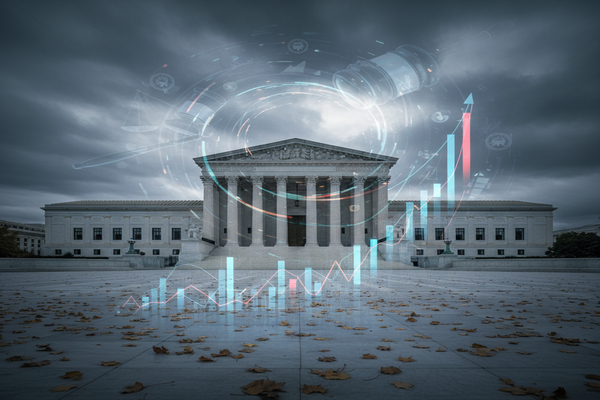
Market Preview: Legal Developments Take Center Stage
Opening Summary: A court calendar with market consequences
The U.S. Supreme Court begins a new nine month term with a docket that includes major cases about presidential authority. Reuters reports that the court will hear arguments in at least two headline cases early in the term while also having rebuffed appeals in several other matters. One high profile appeal rejected was from Ghislaine Maxwell challenging her conviction for assisting Jeffrey Epstein. The justices also opted not to take up a separate case that continues to hound Donald Trump and his administration. That sequence of judicial actions elevates legal and political risk as a consideration for investors planning positions for the coming trading session.
Market Outlook: Where traders may focus
With the Supreme Court signaling that questions about the scope of presidential power will be addressed this term, market participants should expect an extra degree of headline sensitivity. Court rulings on constitutional and federal law issues that pertain to the executive branch can alter expectations about regulatory enforcement, administrative decision making, and future policy options. Even when the court declines to hear a particular appeal, that choice can carry its own implications by leaving lower court rulings in place. For traders considering exposure to U.S. equities, bonds, and dollar liquidity, the near term will likely reflect an elevated premium for legal and political uncertainty.
Risk Assessment: Volatility drivers to watch
News flow from the Supreme Court will act as a volatility driver in the absence of major economic data. The court’s handling of appeals and the timing of oral arguments can trigger rapid re-pricing across asset classes. Legal developments that are perceived to broaden or limit presidential authority will be interpreted for their potential to affect fiscal and regulatory policy. For fixed income markets, any change in expected policy path could influence yield curve dynamics. For equity markets, policy uncertainty may amplify sector rotation as investors reassess which industries stand to gain or lose depending on future administrative scope.
Sector implications: Who could be most sensitive
Sectors that are heavily regulated or that rely on federal contracting and oversight are likely to be most responsive to rulings and court commentary. Financial firms that face regulatory constraints, technology companies engaged in privacy and data disputes, and defense and aerospace businesses with large federal contracts could see sharper moves if the judicial outcomes suggest a change in enforcement posture. Companies with concentrated political exposure may experience two way price action as traders react to headlines and then refine positions as details emerge. Investors should be prepared for headline driven dispersion within and across sectors.
Positioning and strategy: Practical considerations for traders
Given the potential for headline risk tied to Supreme Court activity, traders may prefer to reduce position size ahead of decisive rulings and hearings. Hedging strategies using options and short duration instruments can help manage downside risk. For portfolio managers with a longer horizon, the present period can be used to reassess exposure to politically sensitive names and to reweight toward businesses with predictable cash flows. Cash management may also become more prominent if markets exhibit increased intra session swings.
Event timeline and monitoring: What to watch in real time
Market actors will track the court’s public schedule for oral arguments and decisions. Immediate market reactions will coincide with the timing of rulings and with commentary that provides insight into how far the justices are prepared to reinterpret presidential prerogatives under the Constitution and federal law. Reuters notes that the court has already rebuffed a number of appeals, a procedural development that often has its own market implications because it leaves lower court outcomes intact. Traders should keep a close eye on official statements from the court and on verified reporting to avoid being whipsawed by speculation.
Scenarios and potential market responses
One plausible scenario is that the court narrows executive power in certain areas. Such an outcome could be interpreted by markets as a check on unilateral regulatory action. That interpretation may reduce political risk premia for sectors that had anticipated looser or more activism driven policy. An alternative scenario is that the court affirms broad executive discretion. Markets could view that as an expansion of the range of policy tools available to an administration. Either outcome will carry implications for risk appetite and for the relative attractiveness of cyclicals versus defensive assets.
Final checklist for the trading day
Before taking new positions, review exposure to names with direct ties to federal policy and legal outcomes. Confirm liquidity for any hedges you intend to use. Monitor the Supreme Court docket and reliable news feeds for real time developments. Keep position sizes flexible and maintain clear exit plans to limit loss in the face of sudden headline driven moves. The coming session is likely to be guided more by legal developments than by traditional economic releases, so allocating attention and resources accordingly can prove useful.
Reuters’ One Essential Read highlights the significance of the court’s new term and the major cases over presidential powers. For market participants, the legal calendar has become an integral part of the trading playbook as court activity continues to interact with political narratives and financial market pricing.












